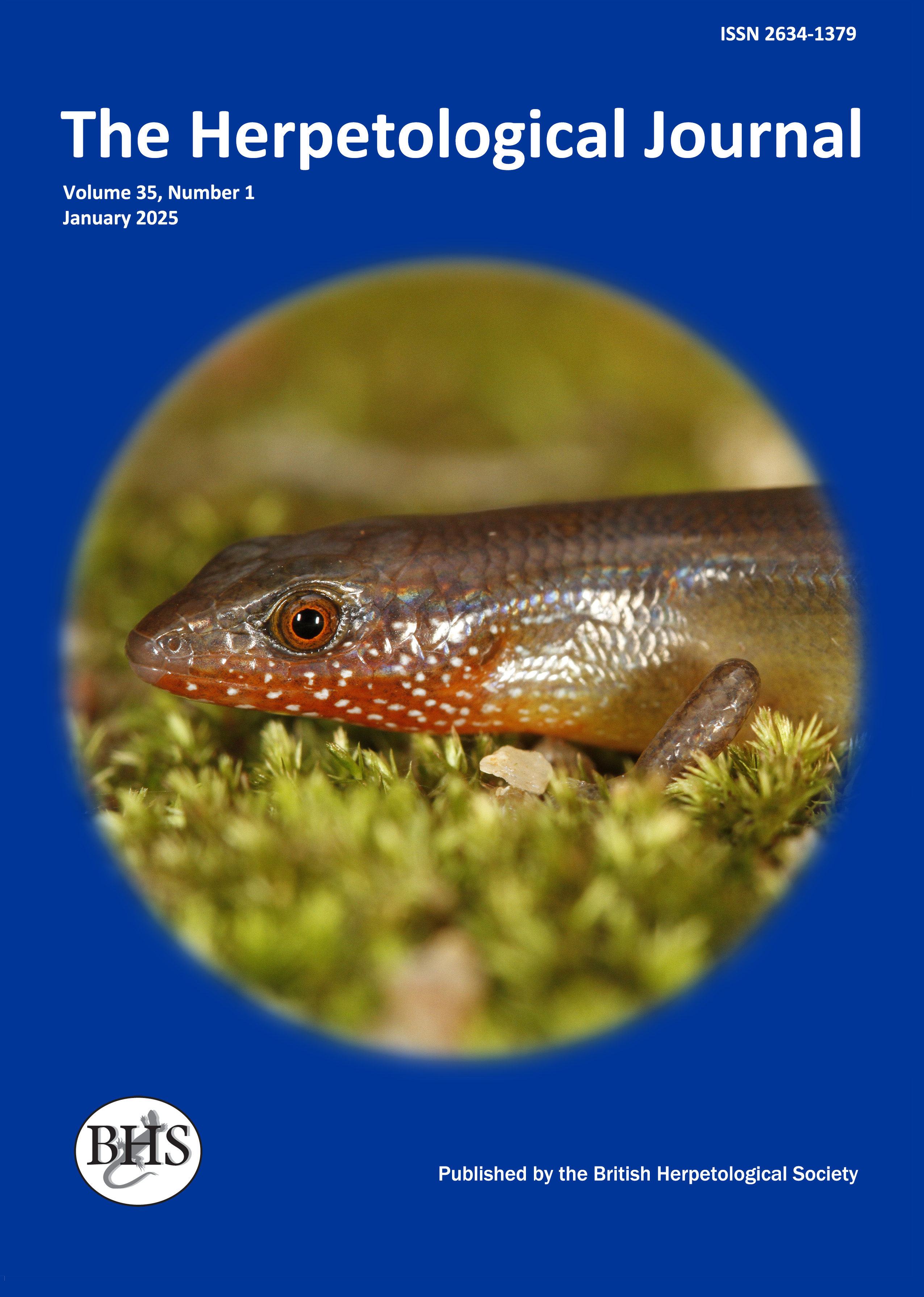
The Herpetological Journal
The Herpetological Journal is the Society's prestigious quarterly scientific journal. Articles are listed in Biological Abstracts, Current Awareness in Biological Sciences,Current Contents, Science Citation Index, and Zoological Record.
ISSN 0268-0130
2021 Impact Factor from Clarivate for the Herpetological Journal is 1.194, an increase of 0.332 from 2020.
pdf 02. Tagging tadpoles: retention rates and impacts of visible implant elastomer (VIE) tags from the larval to adult amphibian stages
1061 downloads
Open Access
pp. 133-140
Authors: Bainbridge, Loren; Stockwell, Michelle; Valdez, Jose; Klop-Toker, Kaya; Clulow, Simon; Clulow, John & Mahony, Michael
Abstract: Population demographics for amphibian larvae are rarely estimated due to marking technique limitations on small body size, morphological change (metamorphosis), and the associated habitat changes (aquatic to terrestrial environments). A technique that may meet some of these limitations is visible implant elastomer (VIE) tagging. In this study, we report on the efficacy of VIE tagging a tree frog (Hylidae) at the tadpole stage for cohort identification across metamorphosis to the adult stage, in a field environment. During our preliminary captive trial, post-metamorphosis tag retention was 100% over three months, with no adverse effects observed on survival, growth or time to metamorphosis. During our field study tag retention in recaptured Litoria aurea was 95% for tadpoles and 88% across metamorphosis. By 200 days post-tagging, retention declined to 75% in the adult stage and stabilised around 50% by 300 days. Post metamorphosis the retention rate was less reliable and dependent upon sex and life-stage. Females showed the highest retention rate (max. 62%, 760 days post tagging), followed by juveniles (max. 45%, 400 days post tagging) and males (max. 20%, 760 days post tagging). We conclude that VIE tagging is a viable method for studying cohort larval movements and population demographics of amphibians up to a 50 day post-metamorphosis stage.
Keywords: LITORIA AUREA, METAMORPHOSIS, TADPOLE, VIE TAGGING, TAG RETENTION

